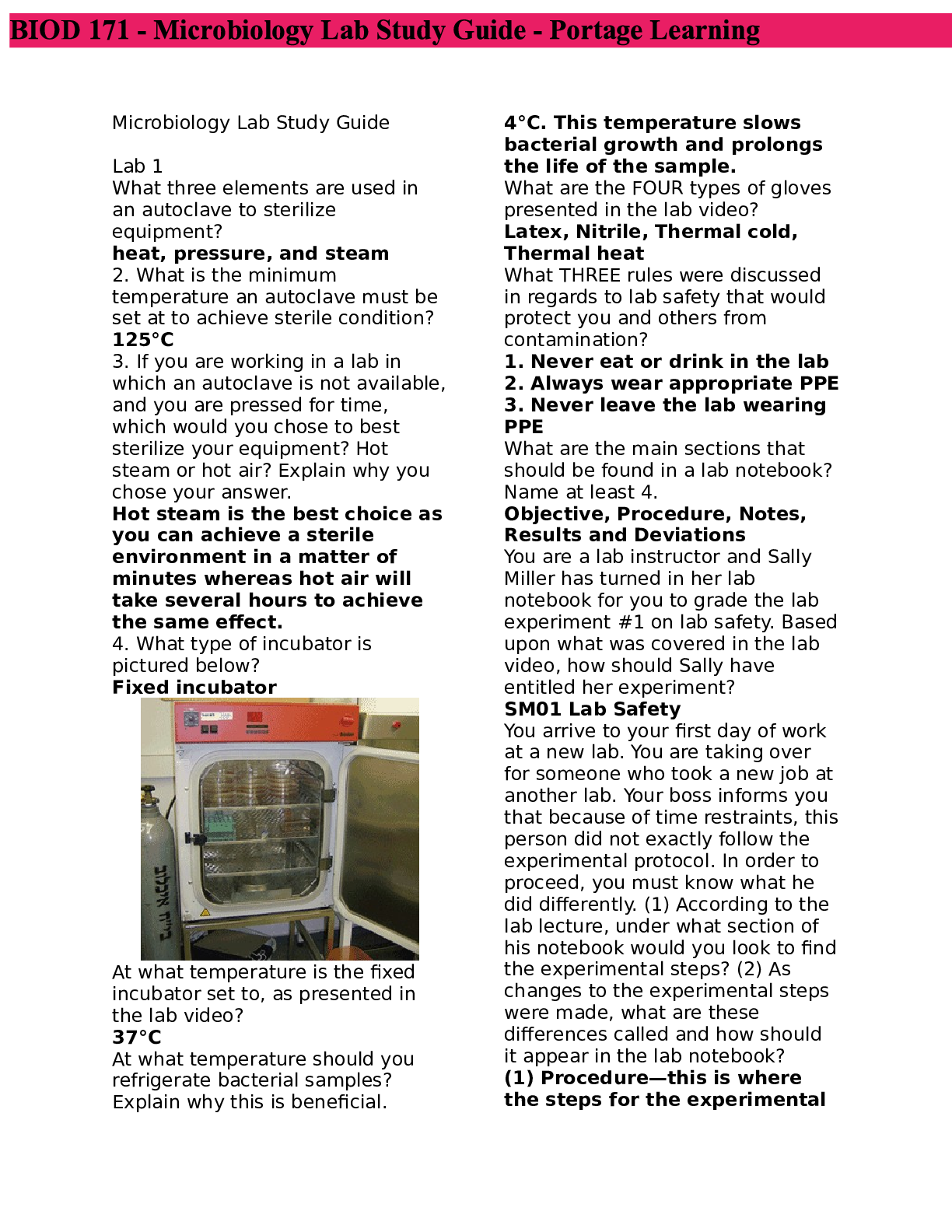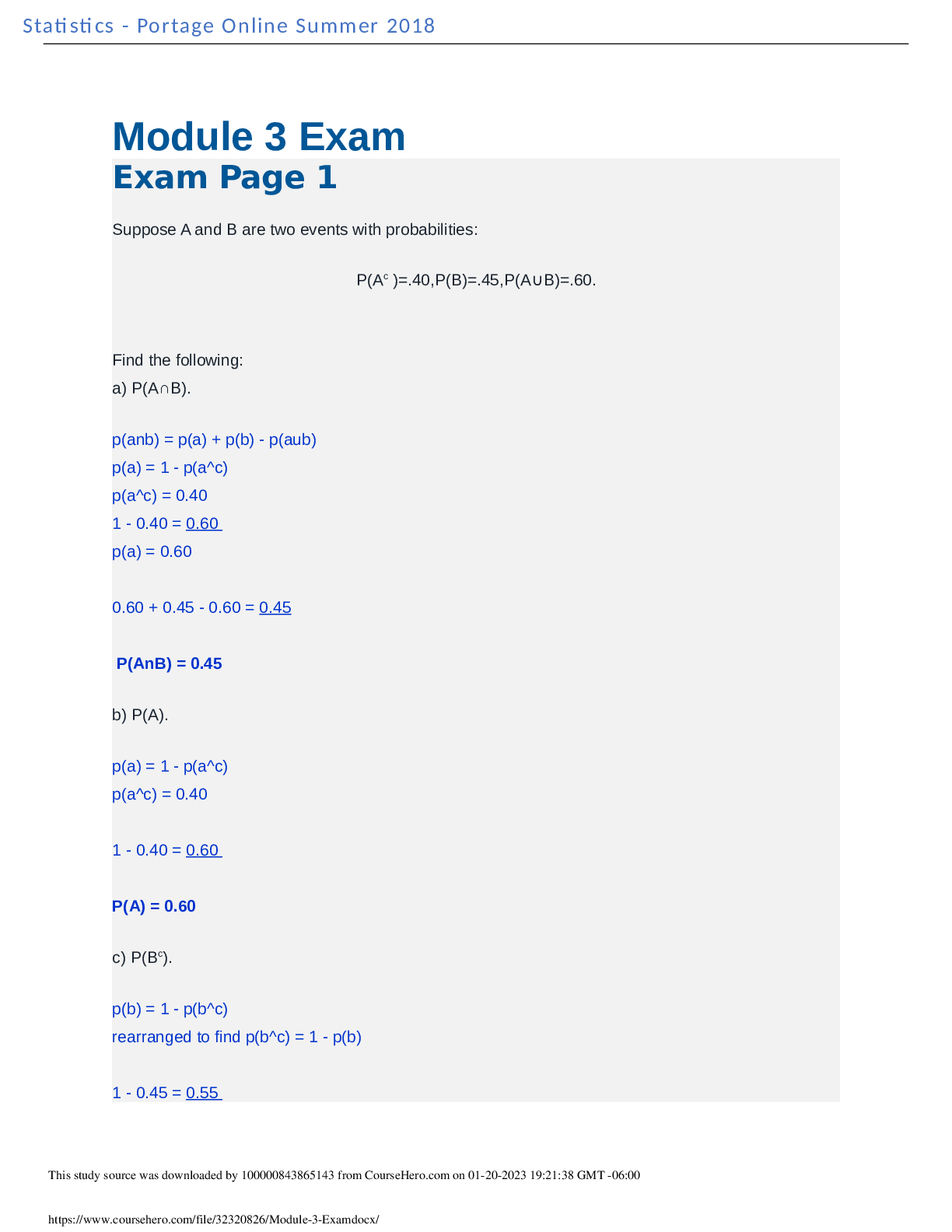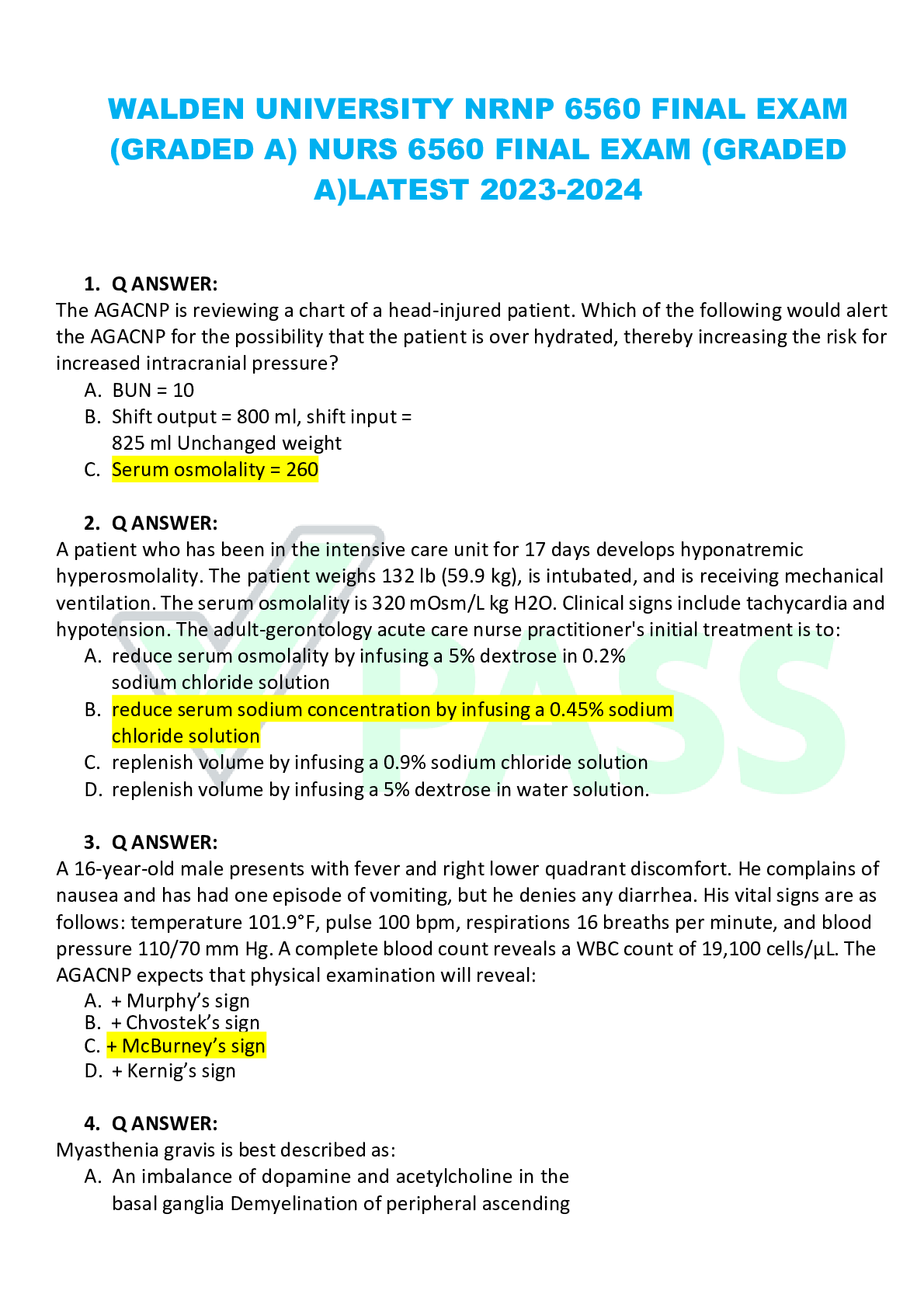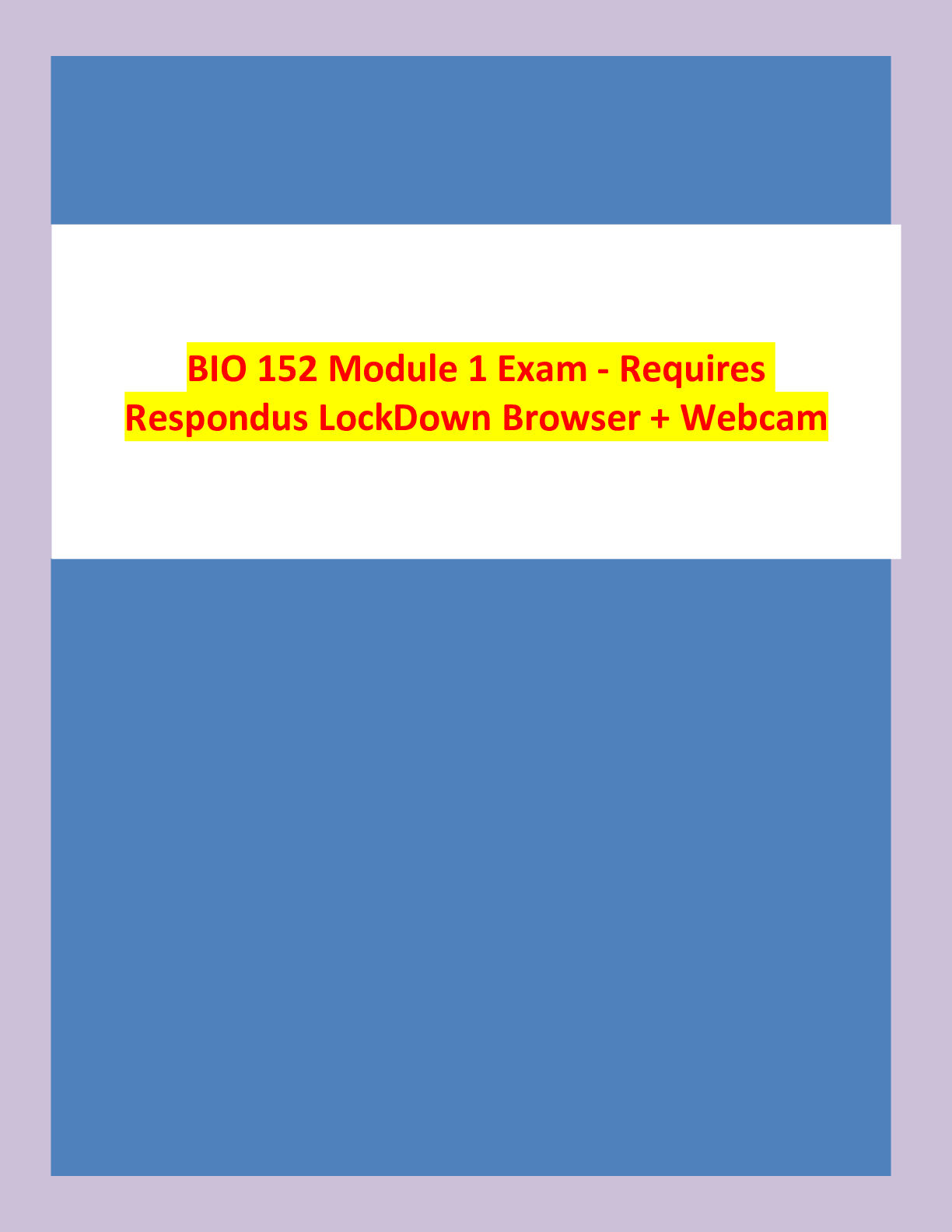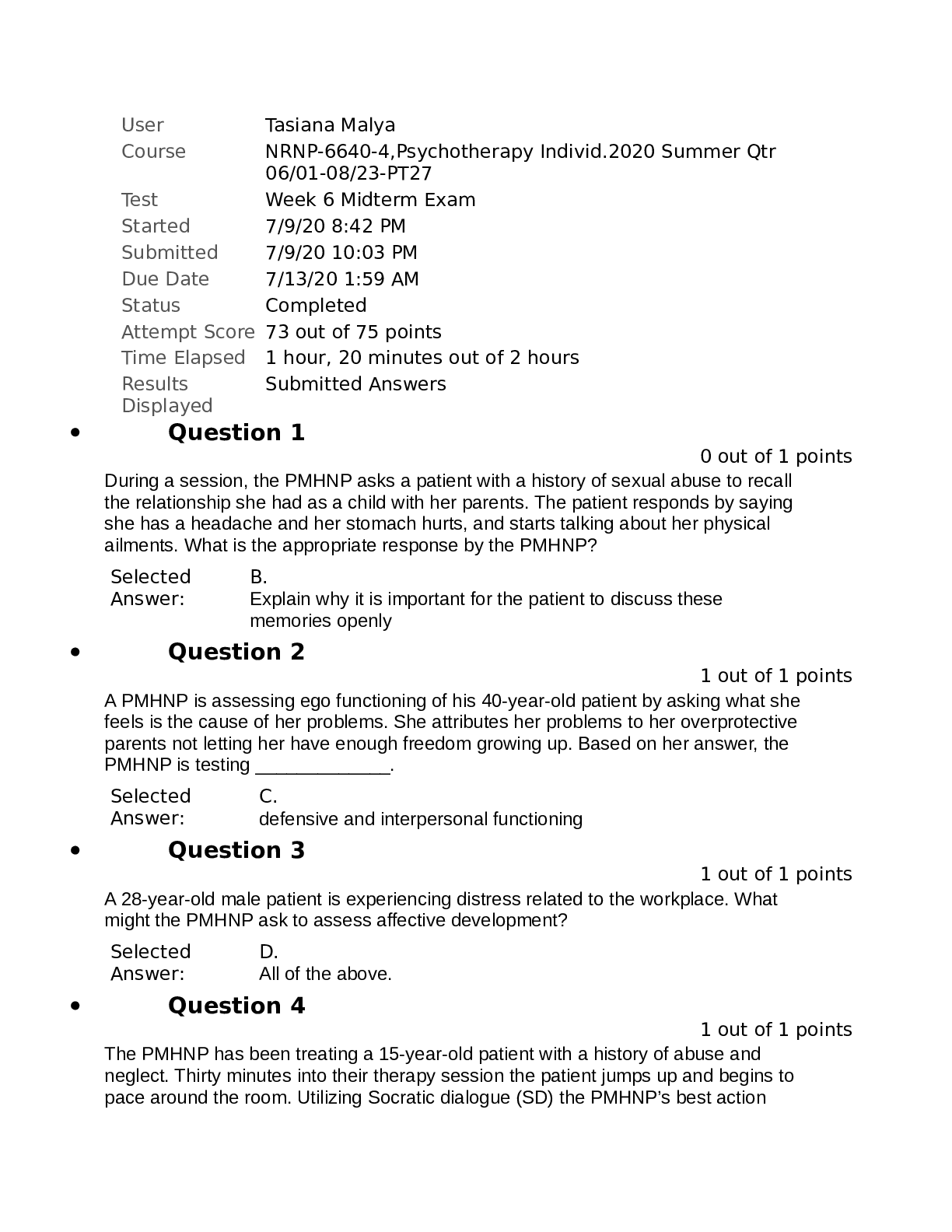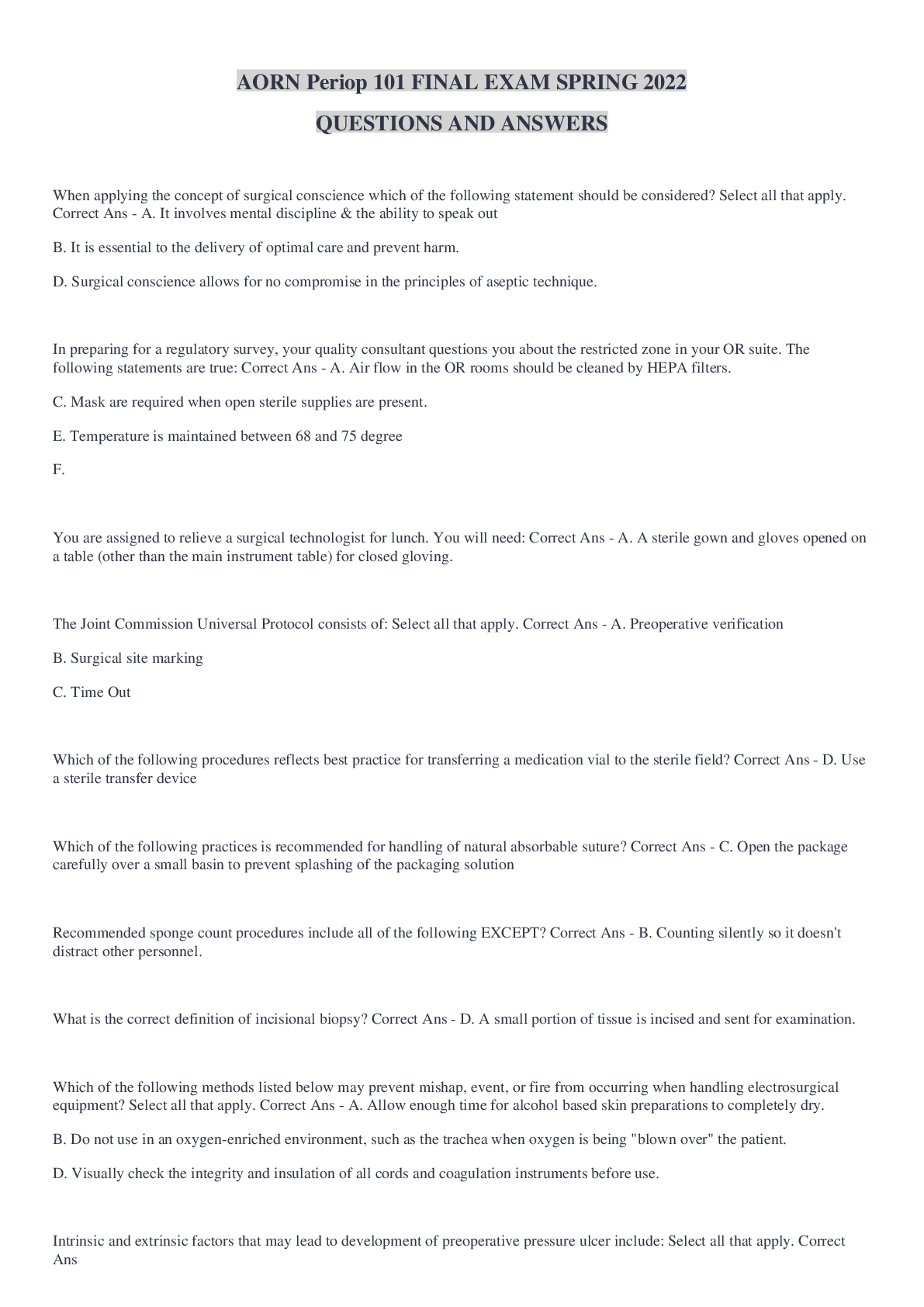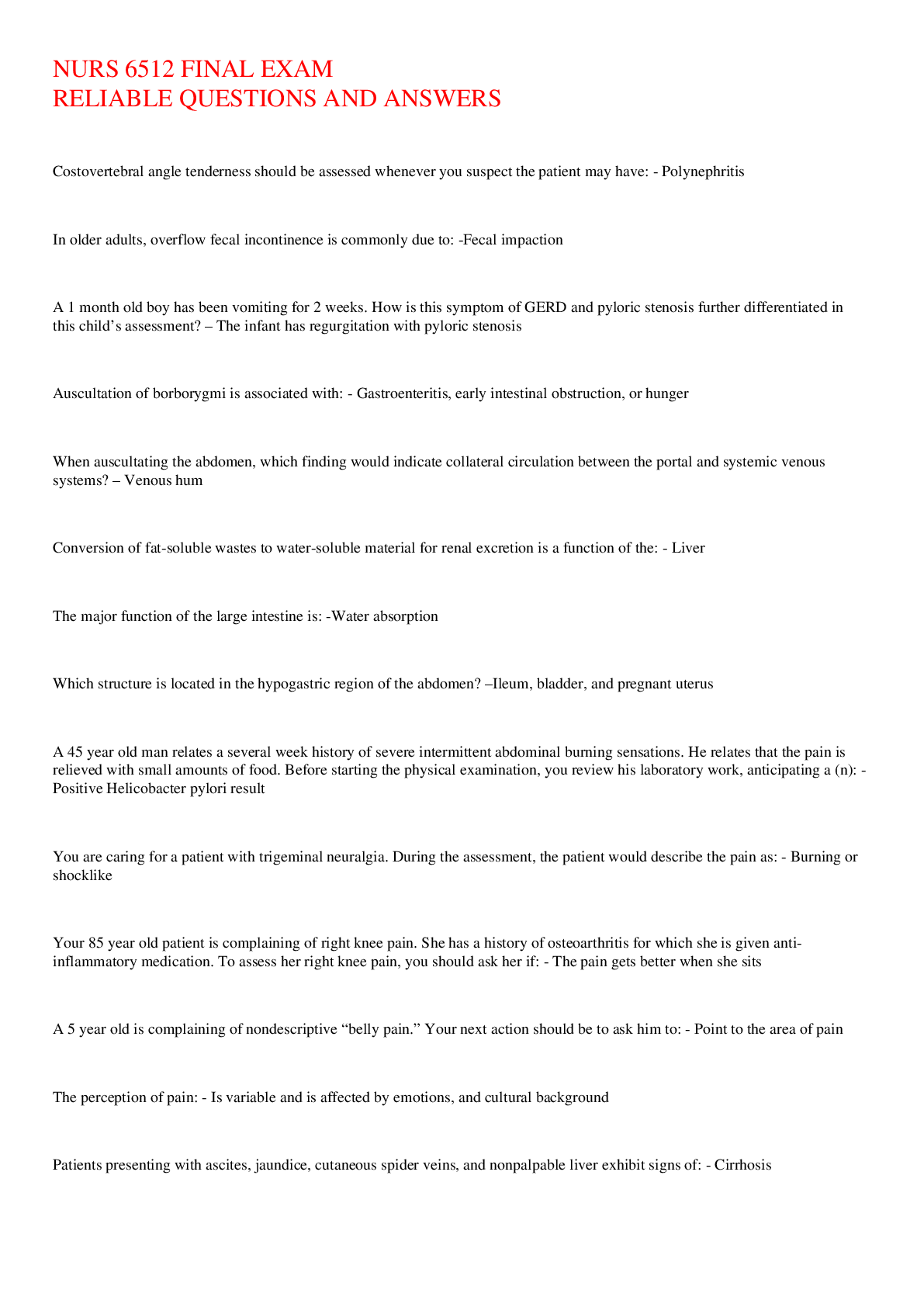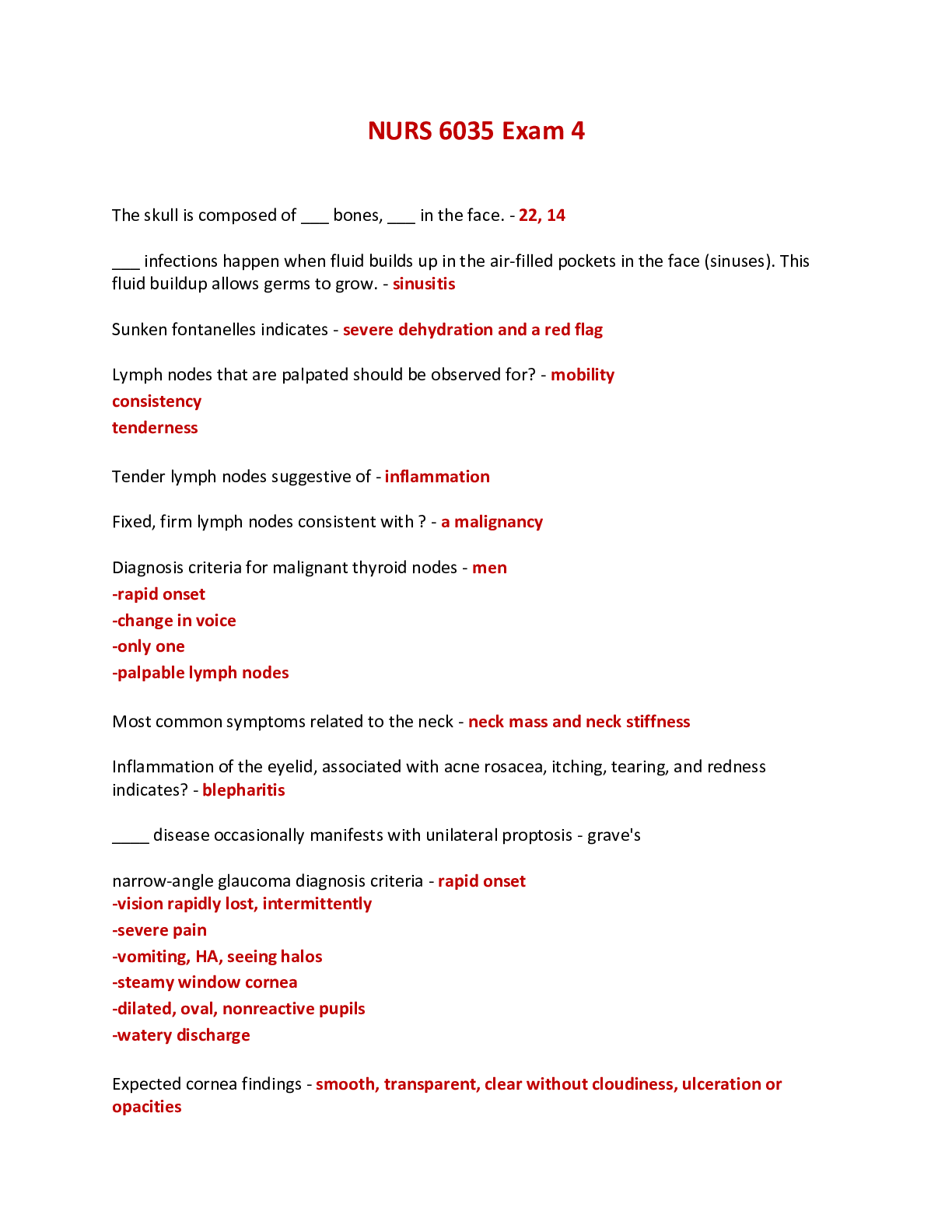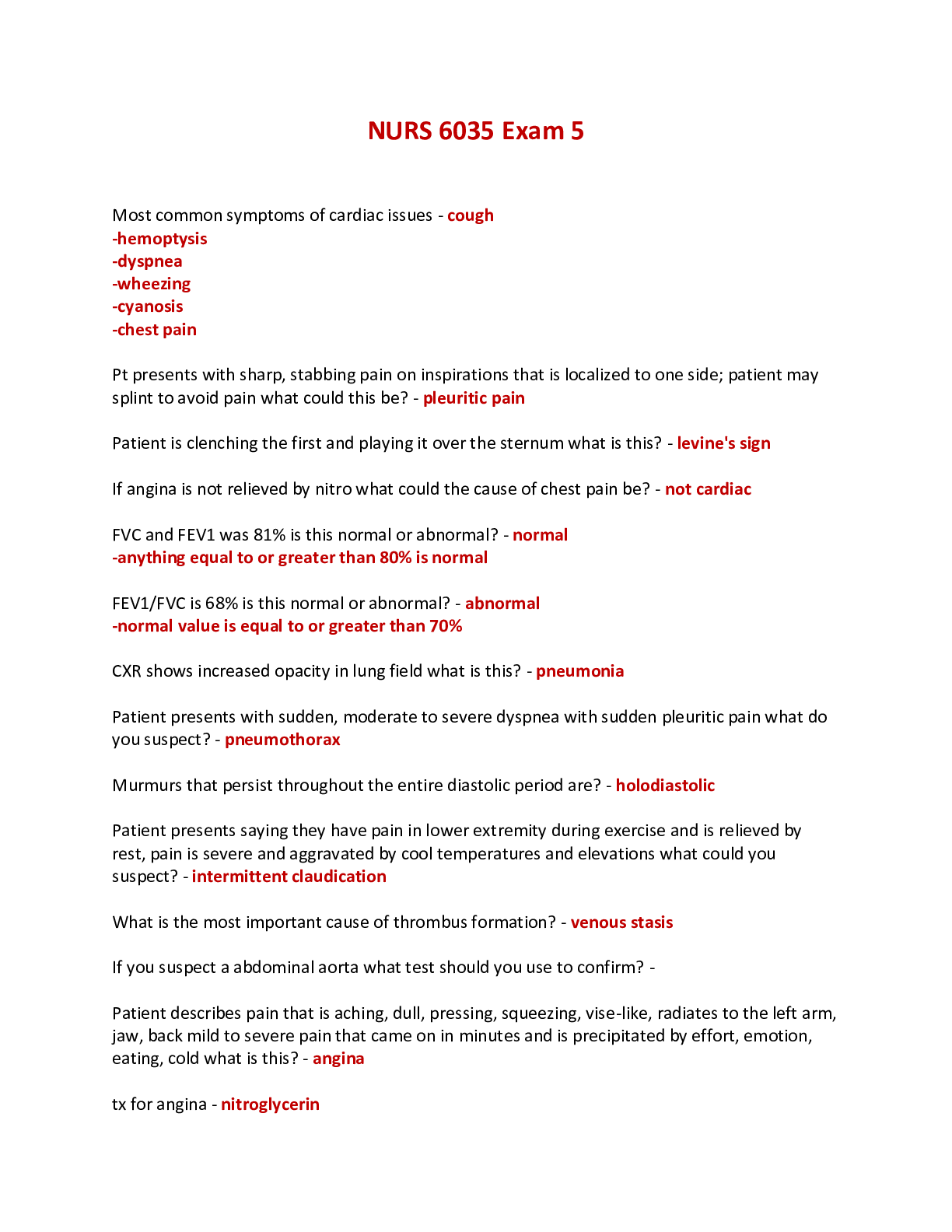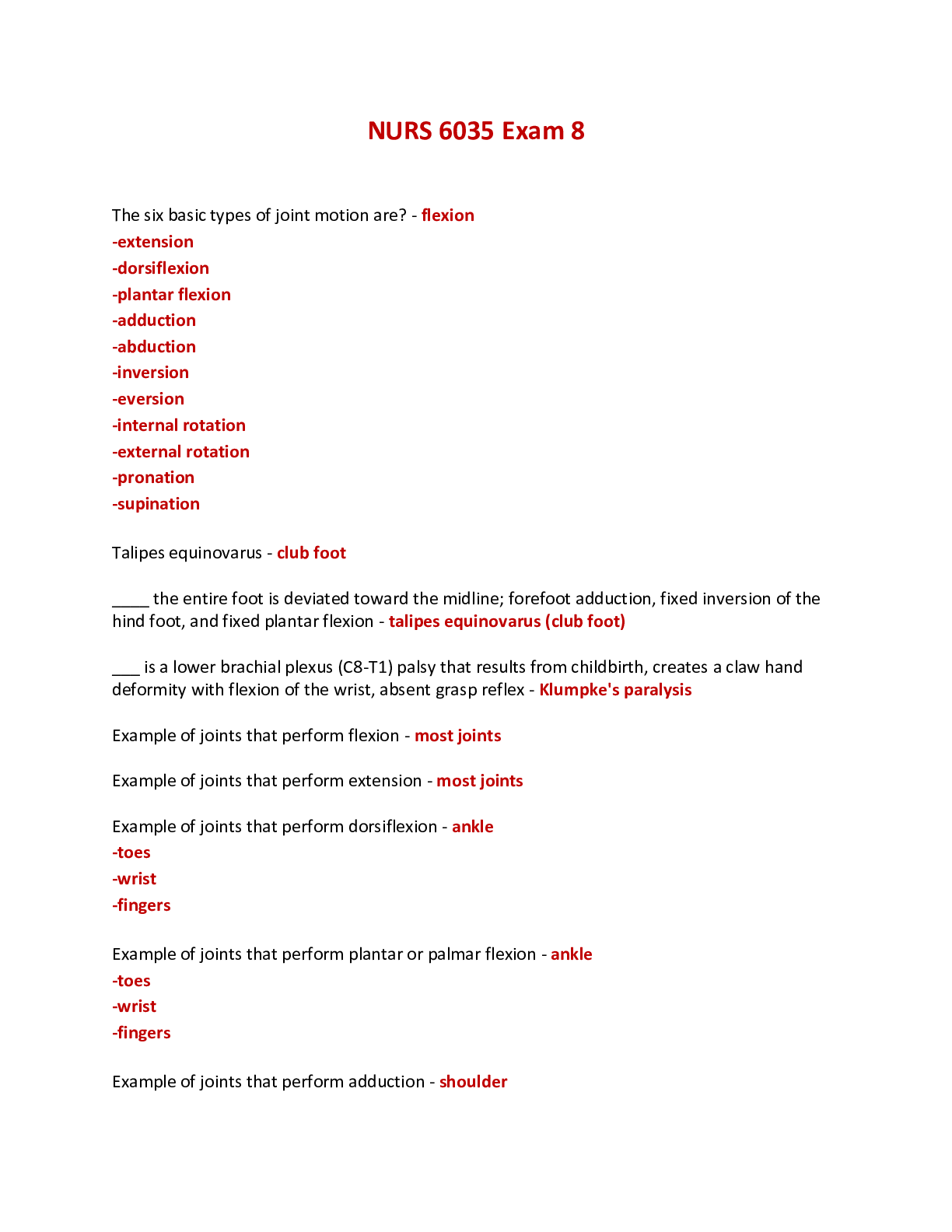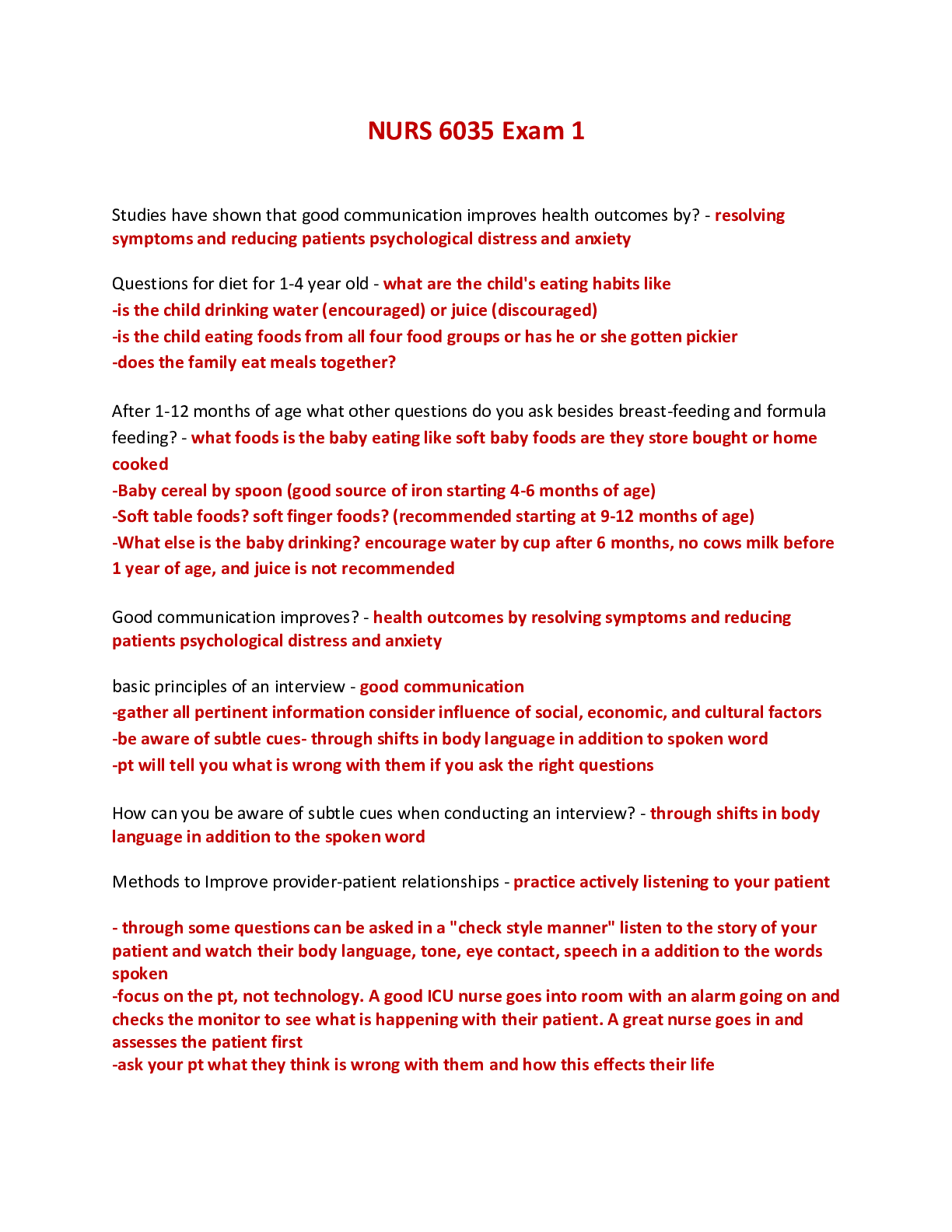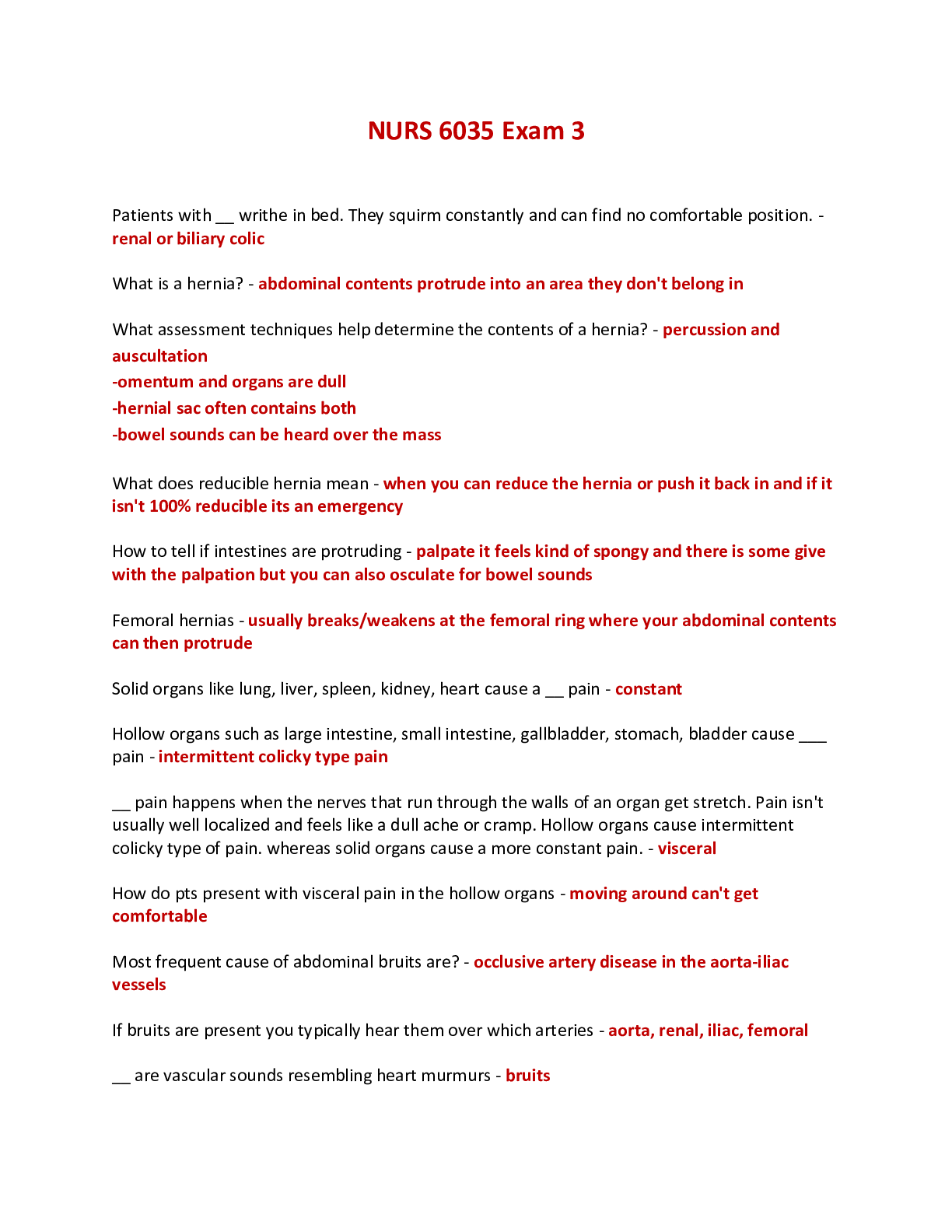Health Care > EXAM > MN 568 Unit 3 Quiz - Questions And Answers (All)
MN 568 Unit 3 Quiz - Questions And Answers
Document Content and Description Below
1.For the client who is at risk for stroke, the most important guideline the nurse should teach is to: 1. increase drinks with caffeine. 2. monitor blood pressure. 3. increase amounts of sodium in ... the diet. 4. monitor weight and activity. 2.The family of a client diagnosed with a stroke asks the nurse if this health problem is very common. The nurse should respond that in the United States a person has a stroke every: 1. 40 seconds. 2. 1 minutes. 3. 2 minutes. 4. 5 minutes. 3.A client is being evaluated for a stroke. The nurse knows that one of the easiest and most common diagnostic tests used to differentiate between strokes is: 1. computed tomography (CT). 2. magnetic resonance imaging (MRI). 3. electrocardiography (EEG). 4. positron emission tomography (PET). 4.While instructing a client on stroke prevention, the nurse mentions medications that are useful in stroke prevention. The following medications are effective in preventing a stroke, EXCEPT: 1. anticoagulants. 2. antiplatelets. 3. anticholinergics. 4. neuroprotective agents. 5.A client is being seen in the emergency department experiencing symptoms of a stroke. The nurse realizes that the administration of a medication to break clots, such as tPA, should be administered within how many minutes of the client presenting to the emergency department? 1. 30 minutes 2. 60 minutes 3. 90 minutes 4. 120 minutes 6.A client diagnosed with an embolic stroke is not a candidate for tPA. The nurse realizes that the client might be eligible for which of the following forms of treatment? 1. Carotid stenting 2. Antiarrhythmic medication 3. Intravenous fluid therapy 4. Carotid endarterectomy 7.A client, being tested for a stroke, is not a candidate for tPA. Which of the following would be contraindicated for the use of tPA? (Select all that apply.) 1. Minor ischemic stroke within 30 days 2. Glucose level 120 mg/dL 3. Blood pressure 190/120 mmHg 4. Lumbar puncture 2 days ago 5. Stroke onset 5 hours ago 6. INR 1.0 1. A patient with a temporary loss of motor function is diagnosed with a transient ischemic attack (TIA). What should the nurse include when assisting in the teaching about this health problem? a. You had a small hemorrhage in your brain. b. Your brain was temporarily deprived of oxygen. c. The neurons in your brain are tangled, so messages get mixed up. d. You have a vessel that is occluded, blocking the blood supply to your brain. ____ 2. The nurse is assisting with teaching a patient who has had a transient ischemic attack (TIA). On which understanding should the nurse base teaching? a. TIAs are not serious, and the patient should have no further problems. b. A TIA is predictive that the patient will have a heart attack within 1 year. c. A TIA is a medical emergency that requires immediate surgical intervention. d. A TIA is a forewarning that the patient is at risk for a cerebrovascular accident (stroke). ____ 3. The nurse is planning care for a client with right-sided weakness and aphasia from a transient ischemic attack (TIA). Which area of the brain should the nurse realize was affected in this client? a. Medulla b. Occipital lobe c. Left hemisphere d. Right hemisphere ____ 4. A patient with a cerebrovascular accident (stroke) has left-sided flaccidity and is unable to speak but seems to understand everything the nurse says. Which term should the nurse use to document the patients communication impairment? a. Sensory aphasia b. Motor dysphagia c. Expressive aphasia d. Receptive dysphagia ____ 5. The nurse is documenting care provided to a patient with left-sided flaccidity caused by a stroke. Which term should the nurse use to document this patients motor status? a. Ipsilateral paraplegia b. Ipsilateral hemiparesis c. Contralateral hemiplegia d. Contralateral quadriparesis ____ 6. A patient comes into the emergency department with symptoms of a stroke. Which medication should the nurse expect may be given to the patient if diagnostic testing confirms an ischemic stroke? a. Heparin b. Clopidogrel (Plavix) c. Warfarin (Coumadin) d. Tissue-type plasminogen activator (tPA) ____ 7. A patient is prescribed an antiplatelet agent to prevent strokes. Which agent was this patient most likely prescribed? a. Aspirin b. Warfarin (Coumadin) c. Acetaminophen (Tylenol) d. Tissue-type plasminogen activator (tPA) [Show More]
Last updated: 1 year ago
Preview 1 out of 13 pages
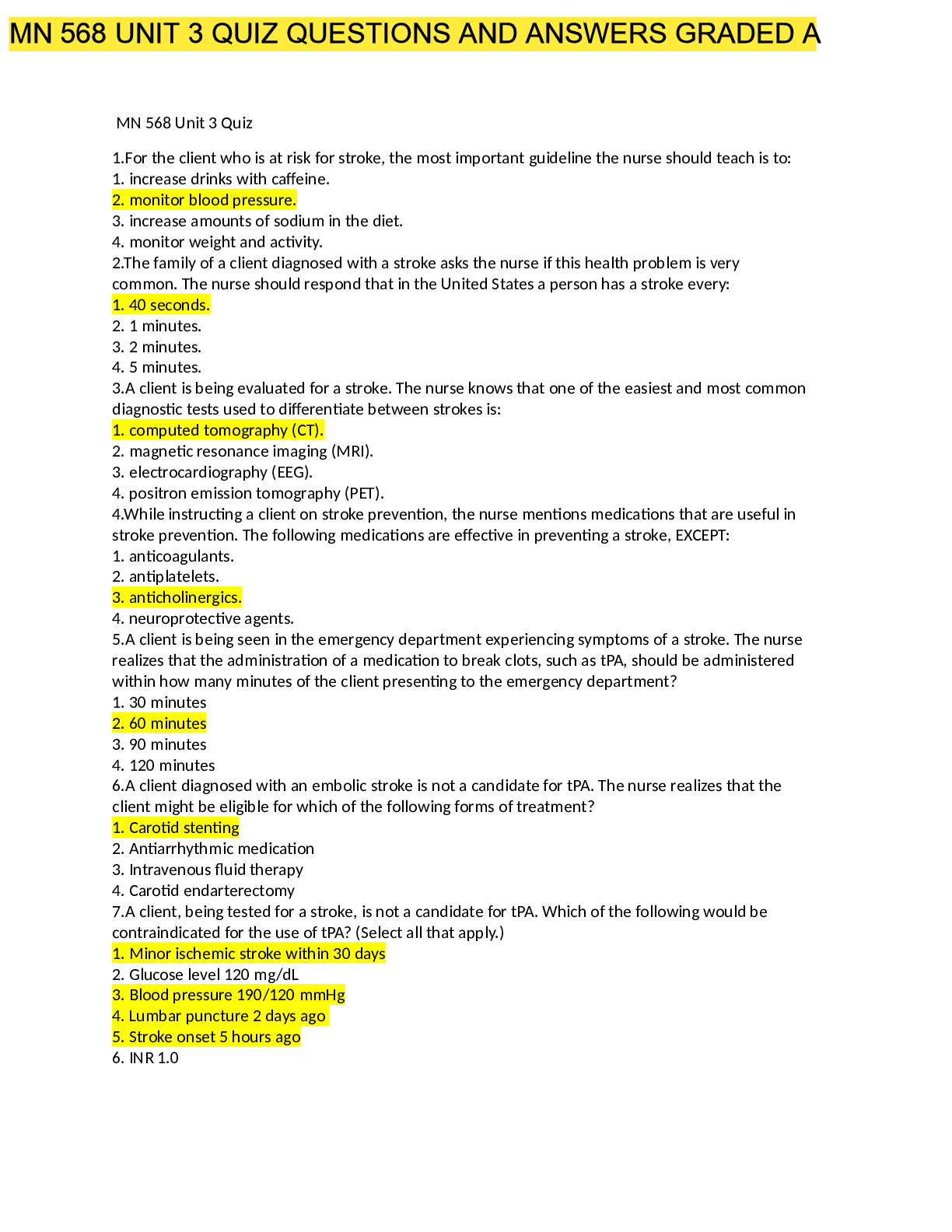
Reviews( 0 )
Document information
Connected school, study & course
About the document
Uploaded On
Jul 11, 2022
Number of pages
13
Written in
Additional information
This document has been written for:
Uploaded
Jul 11, 2022
Downloads
0
Views
42






